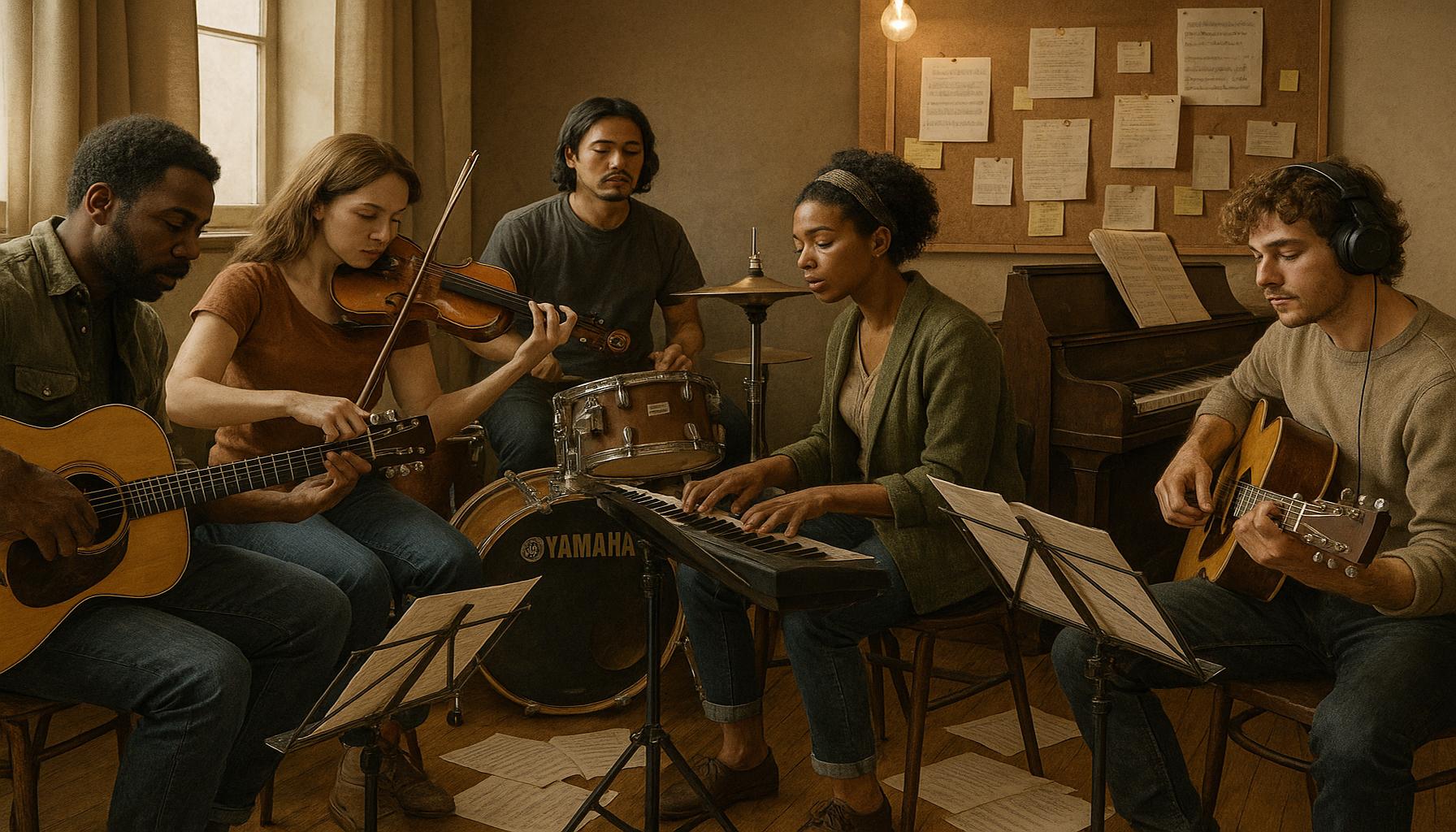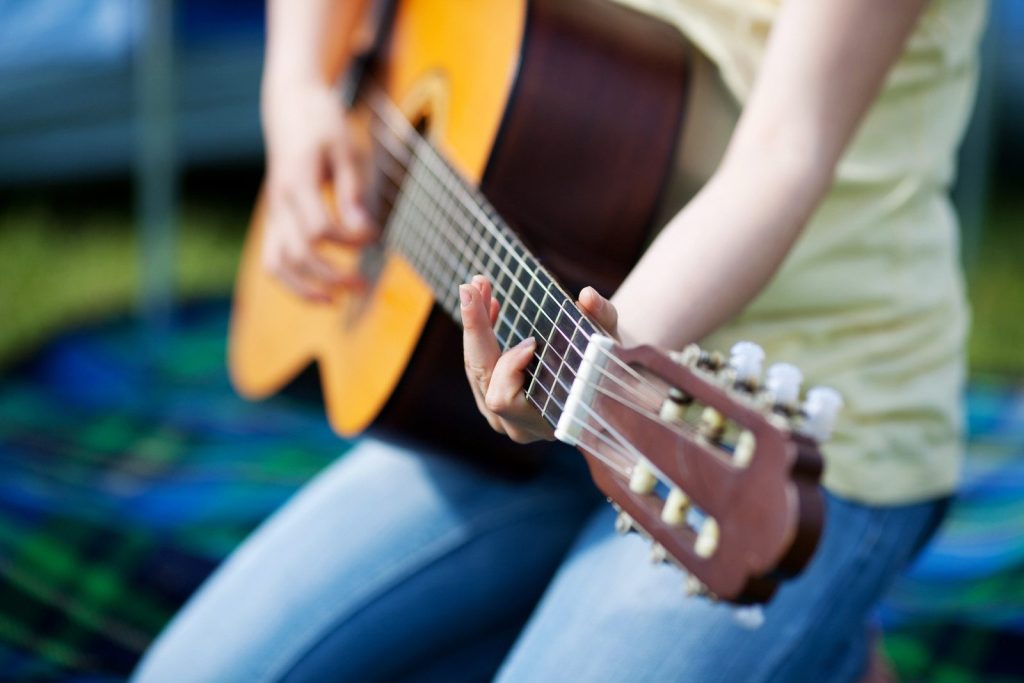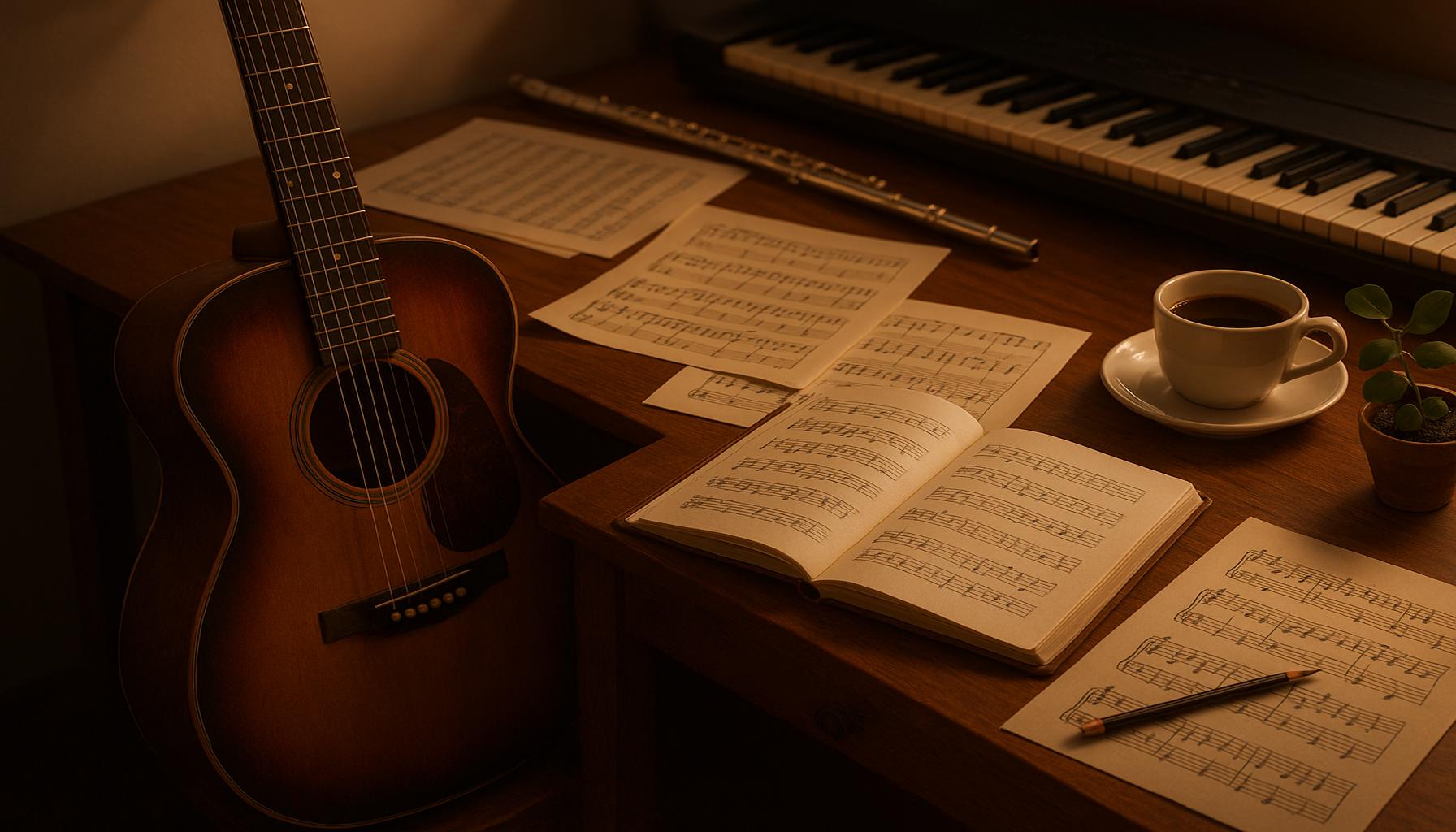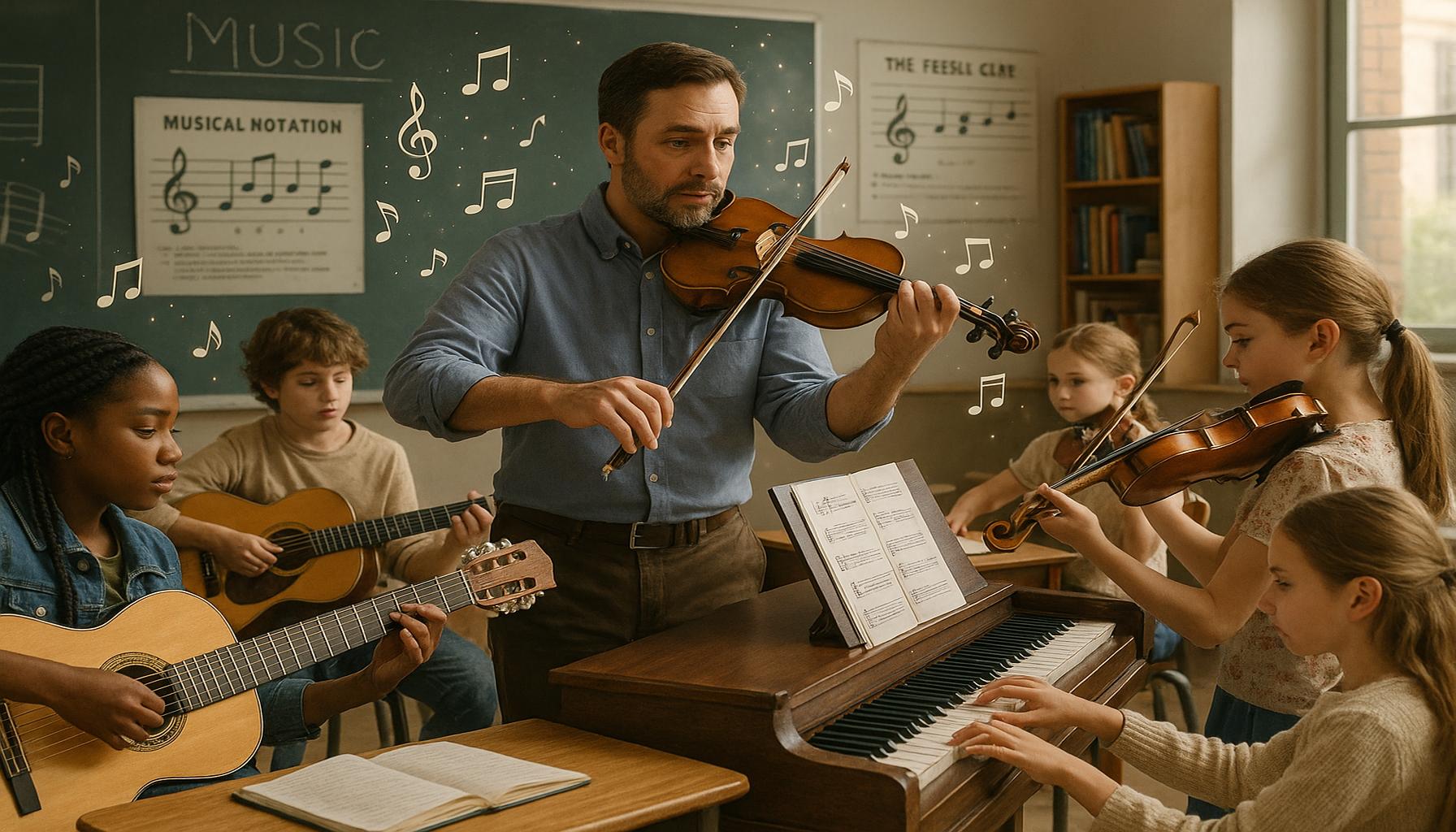The Power of the Essay: How Collective Practice Can Improve Musical Skills and Strengthen Relationships

The Power of Collective Musical Practices
Though music has long been viewed as a solitary endeavor, the practice of engaging collectively challenges this notion and reveals incredible benefits for artists at all levels. Collective practice encompasses ensemble playing, group singing, jam sessions, and even classroom-based musical collaboration. These experiences allow musicians to nurture their talents while forging strong interpersonal relationships that enrich both their music and their lives.
One of the most notable aspects of collective musical practices is skill enhancement. By collaborating, musicians can demonstrate techniques that may be new to their peers. For instance, a guitarist might share finger placement tips that significantly improve a fellow musician’s ability to play a particular chord progression. Similarly, a drummer could introduce a unique rhythm pattern that energizes the entire group, leading to an innovative and vibrant performance. Many community music programs and initiatives, like those operated by the National Association of Music Merchants (NAMM), emphasize group instruction to accelerate skill acquisition through shared learning experiences.
Another remarkable benefit is the way social bonds are formed through shared musical endeavors. Musical collaboration fosters a sense of camaraderie among participants. Groups such as community orchestras or regional choir ensembles often consist of individuals from disparate walks of life who come together to create beautiful music. This unifying force helps in fostering connections founded on common interests, with many musicians forming friendships that last beyond the confines of practice rooms and stages. Engaging with others in music can also help to alleviate feelings of loneliness and anxiety, contributing to overall mental well-being.
Moreover, the act of creating music collectively can lead to a creativity boost. When musicians collaborate, their diverse backgrounds and influences culminate in fresh ideas and innovative compositions. A classic example of this can be found in jazz music, where improvisation and collaboration are central components. Musicians might build upon one another’s ideas, leading to spontaneous musical inventions that would rarely emerge in isolated performances. Beyond jazz, collaborative songwriting has exploded in popularity across genres, resulting in hit songs that reflect a blend of styles and perspectives.
Across the United States, collective musical practices are thriving in settings ranging from local community centers to renowned orchestras and conservatories. Whether it’s a church choir meeting weekly to rehearse or a high school band preparing for a concert, these gatherings offer profound opportunities for growth. Participants discover that through collaboration, they can achieve far more than they ever might on their own, unlocking creativity and possibilities previously hidden within themselves.

Ultimately, the journey into collective musical practice extends beyond individual improvement; it fosters a rich network of human connection, community spirit, and shared expression. As you explore the significance of collaborative music-making, consider the transformative stories and techniques that illuminate its undeniable power. Through the lens of collective experience, music becomes a thrilling and shared adventure, instilling a sense of belonging that resonates deeply within diverse communities.
DISCOVER MORE: Click here to dive deeper
Enhancing Skills Through Collaboration
In the realm of music, the power of collaboration serves as a catalyst for skill enhancement. When musicians unite, they are able to draw from their diverse experiences and knowledge, facilitating a rich learning environment. For instance, imagine a group of aspiring musicians who regularly meet to practice together. A seasoned saxophonist might show a novice how to execute complex scales, while a keyboard player could introduce interesting chord voicings that elevate simple compositions into remarkable pieces of art.
Moreover, in collective settings, musicians are encouraged to step out of their comfort zones. This can lead to the discovery of new techniques, genres, and performance styles that they may not have explored in solitude. Attributes such as ear training, timing, and improvisation are sharpened through group interactions, making individuals more versatile in their craft. Programs like El Sistema, which originated in Venezuela and has spread worldwide, including its adaptations in the U.S., illustrate how collective musical training can bring about significant improvements in both individual skills and group synergy.
The Role of Feedback in Collective Practice
Critical to the growth of any musician is the feedback received during rehearsals. Engaging with others allows for constructive criticism that is often invaluable. Peer-to-peer feedback provides different perspectives that can illuminate strengths and weaknesses that one might overlook while practicing alone. Some key elements of feedback in collective music practice include:
- Technique Sharing: Musicians can demonstrate specific techniques to one another, enriching the collective knowledge base.
- Performance Evaluation: Participants can critique each other’s playing, offering insights that encourage improvement.
- Encouragement: Positive reinforcement from peers fosters a supportive atmosphere, motivating musicians to keep pushing their limits.
In addition to sharpening musical skills, these collective practices prompt mutual support and understanding, further reinforcing the bonds between participants. Whether in a high school band preparing for a competition or a casual backyard jam session with friends, the spirit of collaboration is evident as musicians bring their unique talents to the ensemble.
Building Community Through Music
The act of making music collectively extends beyond mere technical growth—it nurtures a sense of community and belonging. Musicians often find that their shared experiences lead to lasting friendships and support networks. Programs like Music Together—a widely recognized early childhood music program—highlight how engaging in music as a group helps forge connections among families and children, further proving that music can serve as a foundation for deep relational bonds.
In a world often marked by isolation, the power of collective musical practices offers a compelling antidote. As musicians collaborate, they not only improve their individual skills but also contribute to a larger tapestry of human connection. This sense of unity forms an essential component of why collective practice remains an invaluable pursuit for musicians across the United States and beyond, revealing the profound impact that music can have on our daily lives.
The Transformative Impact of Collective Practice
Collective practice is more than just a rehearsal; it is a multifaceted process that allows musicians to develop their skills while building strong interpersonal connections. Engaging with peers in a collaborative environment fosters a unique dynamic that enhances not only technical abilities but also social interaction. Through mutual feedback and encouragement, musicians can address weaknesses, share techniques, and motivate one another to reach new heights.Moreover, participation in collective practice allows for the exploration of diverse musical perspectives. When individuals from different backgrounds unite, they contribute unique insights that can reshape one’s understanding of music. This collaborative exchange sharpens critical listening skills, as musicians learn to appreciate nuances that might otherwise go unnoticed. Such interactions can lead to transformative changes in a musician’s style, paving the way for innovative compositions and performances.Additionally, the bonds formed in collective practice environments extend beyond music. The efforts to communicate effectively and work towards common goals foster trust and empathy among participants. This environment reinforces the idea that music is not just an individual pursuit, but a shared experience that can deepen relationships and foster a sense of community. The emotional connections formed during these sessions can also serve as a source of inspiration, driving musicians to express themselves more authentically and passionately. By sharing personal stories and experiences through music, individuals can create profound connections that resonate with audiences, enhancing the overall impact of their performances.As we delve deeper into the advantages of collective practice, it becomes increasingly clear that the benefits stretch far beyond mere musical enhancement. This practice cultivates resilience, teamwork, and emotional intelligence, all of which are invaluable not only in the realm of music but also in everyday life. The exploration of these enriching experiences highlights the power of collaboration in shaping both musical talents and personal relationships.
| Advantages | Description |
|---|---|
| Enhanced Communication Skills | Collective practice encourages active listening and articulating ideas clearly. |
| Strengthened Relationships | Working closely fosters trust and collaboration between musicians. |
In summary, the art of collective practice offers a myriad of benefits that reinforce the idea that musical development is inextricably linked to interpersonal growth. Exploring these dimensions not only enriches the musical experience but also cultivates a vibrant community of passionate individuals.
EXPLORE MORE: Click here to dive deeper
Fostering Creativity and Expanding Musical Horizons
Collective practice does not merely focus on honing technical skills; it also acts as a powerful force for creativity. When musicians collaborate, they influence one another’s creative processes, leading to innovative approaches that could not emerge in isolation. A group of musicians might combine diverse influences—from jazz to classical to folk—culminating in unique pieces that celebrate their individuality while simultaneously embodying a collective identity. The Sonic Youth ensemble, known for blending various genres and inviting guest musicians from different backgrounds, exemplifies this blending of styles that can arise from collaborative music-making.
Collaboration encourages musicians to explore new instruments and experiment with unconventional sounds. For instance, a guitarist may pick up an unfamiliar percussion instrument during a jam session, opening pathways to rhythmic exploration. In schools across the United States, programs that emphasize ensemble work typically witness students pushing beyond their initial musical preferences, embracing new genres and cultures, ultimately diversifying their musical palettes and encouraging creative growth.
Interpersonal Skills and Relationship Building
Besides skill enhancement and creativity, collective practice significantly develops interpersonal skills. Working together in a musical context fosters communication, empathy, and teamwork—skills that are transferable to other areas of life. Musicians learn to listen actively, responding to cues and adapting their performance based on the dynamics of the group. This active engagement translates to stronger relationships both on and off stage, as mutual respect and vulnerability are cultivated.
Moreover, forming music groups or bands serves an important social function. The shared goal of creating and performing music fosters an environment where participants can express themselves authentically. A case in point can be seen in community bands, where individuals often walk in as strangers and leave with a sense of belonging, having bonded over rehearsals and performances. Notably, organizations such as Little Kids Rock focus on building such communities through music, showing how shared musical pursuits enable young people to build friendships and support one another.
The Lifelong Impact of Collaborative Musical Practices
Studies demonstrate that lifelong involvement in music—especially collaborative music-making—can lead to enhanced cognitive abilities and emotional intelligence. A report from The National Endowment for the Arts suggests that musicians often exhibit improved problem-solving skills and higher levels of emotional awareness. These benefits extend far beyond music, influencing personal and professional relationships. The emotional capabilities nurtured through shared musical experiences equip individuals to navigate life’s challenges with greater ease and understanding.
In essence, collective musical practice serves as a profound vehicle for both personal and relational growth. By enhancing creativity, cultivating interpersonal skills, and fostering lasting relationships, collaborative music-making becomes an essential tool in the toolkit of musicians. As participants learn to appreciate each other’s strengths and contributions, they develop a sense of community that resonates well beyond the confines of musical performances.
DISCOVER MORE: Click here to learn how art can uplift your mental well-being
Conclusion: The Transformative Power of Collective Music Practice
In the tapestry of musical development, collective practice emerges as a vibrant thread, weaving together the enhancement of musical skills and strengthening of interpersonal relationships. Through collaboration, musicians not only elevate their technical expertise but also expand their creative horizons, empowering themselves to create new and innovative works that resonate deeply with audiences. The interplay of different genres and influences fosters an environment of artistic growth that enriches each participant’s musical journey.
Furthermore, the experience of working together in a musical context cultivates essential interpersonal skills. As musicians learn to communicate effectively, listen actively, and respond to one another’s cues, they forge connections that extend beyond the stage and into their daily lives. Collaborative music-making becomes a powerful social tool, transforming individuals into a cohesive unit that thrives on shared goals and mutual respect. Community initiatives, such as those seen in programs like Little Kids Rock, illustrate the profound impact of music in building lasting relationships among participants.
Ultimately, the lifelong benefits of collective musical practice stretch well into cognitive and emotional realms, enriching personal and professional lives alike. As studies by organizations like The National Endowment for the Arts highlight, the skills developed through shared musical experiences equip individuals with the tools they need to navigate life’s complexities with sensitivity and understanding. Embracing the power of the essay on the collective practice of music reveals its potential not just for personal enhancement but for fostering a more connected and compassionate society. As we continue to explore and engage in collaborative music-making, we unlock a world of possibilities, both in our craft and our communities.


